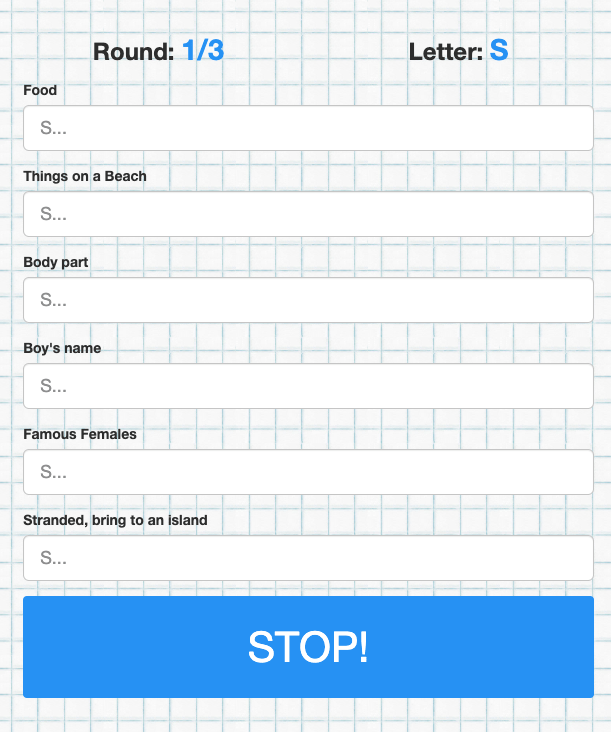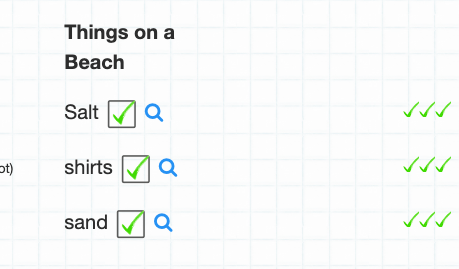Scattergories
I played Scattergories with three other friends. Scattergories is made by the game company Hasbro and offers a board game physical setup as well as a mobile app-based setup. There are also a few websites that mimic the behavior for free, and that is what I used: https://citycountryriver.net/g/DFCAG6E53I. Overall, Scattergories is a fun game because of its community building, difficulty level, and incorporation of competition. However, the visual design of the game website I used could be improved for better transparency throughout the game.
Notable elements of the game
The primary elements of the game are the virtual game board/place where players write their items, a timer, a letter die/random letter generator, and lists of categories.
Types of fun
The primary aesthetics of fun in this game is fellowship and challenge. When playing this game with friends, it is easy to feel the social connection and camaraderie that is being built among us. Through the categories, the words that players use sometimes told interesting information about their lives and we ended up having a bit of a detour to hear a story or two.
Challenge was the other main aesthetic of fun built into this game. Because you are trying to name more categories than other people playing and also name more creative places, a strong sense of competition is instilled in players during the game.
The game incorporated in more difficulty through the rule that declares that if multiple people write down the same word, then this word doesn’t count towards points. This encouraged me and my friends to be more creative with our answers. Without this rule, I would have written less creative answers because I would only be competing against the clock instead of against other players.
Graphic design decisions
 The graphic design of the part of the game when you input your words was strong. It used proximity to group relevant items together, such as putting the “answer sheet” all together and placing the round and the letter at the top in a grid format. Additionally, I liked how it put the letter that you were making words for in multiple places: on the upper right AND in the text input box. This is an example of distributed rules.
The graphic design of the part of the game when you input your words was strong. It used proximity to group relevant items together, such as putting the “answer sheet” all together and placing the round and the letter at the top in a grid format. Additionally, I liked how it put the letter that you were making words for in multiple places: on the upper right AND in the text input box. This is an example of distributed rules.
 The graphic design when comparing players’ answers could be improved. It is unclear what the green checkmarks are for and what the magnifying glass does. It would have been good to more simply show which answers were accepted and which were not.
The graphic design when comparing players’ answers could be improved. It is unclear what the green checkmarks are for and what the magnifying glass does. It would have been good to more simply show which answers were accepted and which were not.
Comparison to other games
I would place Scattergories in the word games and guessing games categories. It is more individualistic than games like Pictionary, which benefit from players working well together. That individualism fuels more competition in Scattergories, but I think makes it less engaging in the long run. In comparison to Bananagrams, Scattergories is also similar but I think there is less transparency in Scattergories during the idea generation phase. That results in the game feeling less engaging as well.
Handling of abuse
The main type of abuse that could come up in this game is people lying about their answers or changing their answers after another player says what they wrote down for a category. Playing this game on a computer definitely solves for this problem, as once you input your answers, you cannot lie or change them. However, I could see how this issue would be difficult in the board-version of this game. One way to solve this would be for people to pass their lists immediately to the person next to them so that there is no room to change.
How to improve the game
I think this game could benefit from theming! After playing for a while, it did get a bit boring to just come up with random words. By incorporating themes to rounds, players could show off their knowledge of particular subjects and be united over shared interests. For example, you could make a Harry Potter theme to the game.



